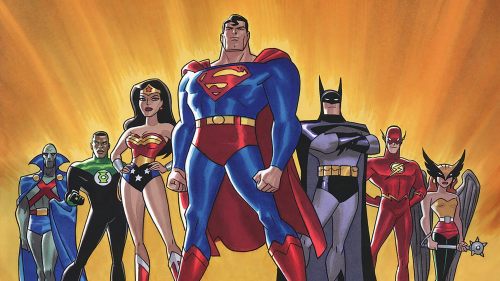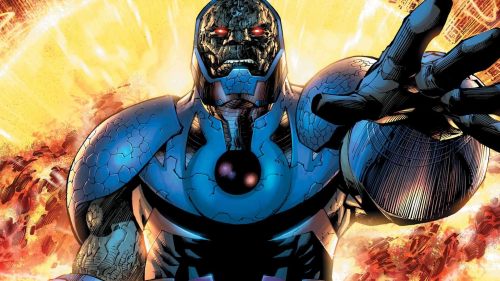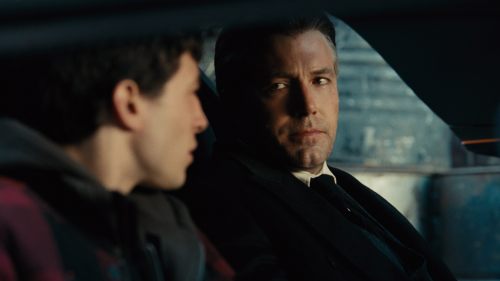Is DC Bringing The Multiverse To Movies And TV?
First, some history:
The Golden Age of superheroes happened in the 1930s and the 1940s, and the earliest superheroes came from the company that would be known as DC. These heroes - Superman, Batman, Wonder Woman, The Flash, Green Lantern and more, many coming together on a team called the Justice Society of America - would remain popular through World War II. But by the end of the 40s the youth audience that bought comics started turning in a big way towards Westerns and crime and horror books, and many of the classic Golden Age heroes found themselves put into the oblivion of cancelation. Only the big three, Superman, Wonder Woman and Batman, soldiered on, but The Flash, Green Lantern, The Atom and Hawkman were among the casualties.
In 1956 DC Comics editorial asked Julius Schwartz to revive The Flash in a one-shot short story in the pages of Showcase. But rather than bring back the original Flash, Schwartz and writers Robert Kanigher and John Broome, penciler Carmine Infantino, and inker Joe Kubert created a totally new character. The old guy, Jay Garrick, wore a pot on his head and a baggy sweatsuit. The new guy, Barry Allen, wore a skin-tight red onesie and an evocative mask. Barry Allen knew who Jay Garrick was... because he had read Garrick's adventures in the comics. When The Flash was a hit DC began reviving all their old Golden Age heroes, reworking them completely for the new era, called the Silver Age.
But all of these heroes stood apart from their predecessors. They lived in a different world. The two Flashes could never meet.. until 1961, when Schwartz worked with legendary Flash writer Gardner Fox on a story called Flash of Two Worlds, where The Flash was able to vibrate at such a rate that he actually entered a parallel world where Jay Garrick is The Flash. Barry Allen learns that he, and all the Silver Age heroes and the Justice League of America, live on Earth-One, while Garrick and the Golden Age heroes live on Earth-Two. Suddenly both versions of all DC characters were viable, and the Justice League and the Justice Society began doing regular crossovers.
Thus was born The Multiverse. This is what makes DC Comics truly unique from Marvel; it's easy to point to DC's pantheon of godlike heroes as a stark contrast to Marvel's feet-of-clay heroes, but the big difference for involved readers was DC's complicated and exciting multiversal continuity. More worlds were soon added to the Multiverse - Earth-Three, where all the heroes are villains and have formed the Crime Syndicate of America, Earth-Four, where the Charlton Comics heroes lives, Earth-Five, where there is no Krypton, Earth-S, where Captain Marvel and the Marvel Family exist - and it eventually became infinite. Marvel had a multiverse as well, but it was never as central to the universe as DC's was.
And the Multiverse became even more defining of a certain era of DC Comics in 1986 when the company decided to destroy it. The comic industry was changing, and rather than just kids picking up random issues when they could the main reader base tended to be older, and it tended to be people who cared about continuity. The writers rarely did in the Silver Age, and so many elements of the histories of the heroes were contradictory, made no sense or were written off as 'an alternate Earth,' which nerds really hate. They like knowing everything counts. And so was born Crisis on Infinite Earths, the industry-defining event miniseries that destroyed every single Earth except for Earth-Prime (that's where we live) and the main DC Comics Earth. All the heroes of the various Earths were either written out of continuity or jammed into this new Earth. Jay Garrick was the first Flash, who fought in WWII and inspired Barry Allen, who in turn inspired the third Flash, Wally West. Batman and Superman no longer fought in World War II, but Wonder Woman did - albeit it was her mom doing it. The Golden Age characters no longer lived in an alternate world but were now the foundational stones of this new history.
DC couldn't leave well enough alone, though, and it kept returning to continuity-cleaning events like an OCD sufferer. Zero Hour, Infinite Crisis, Final Crisis and Flashpoint followed, each tinkering with the world, each returning or removing elements of the Multiverse. The latest iteration is The New 52, yet another clean slate reboot of the DC Universe, this time positing a reality where there are only 52 alternate Earths as opposed to an infinite number. That status quo may yet be changing again, as recently all comic creators were told to put an end to their stories in preparation for the next major, universe-spanning crossover.
All of this is to explain why the use of the word 'Multiverse' when talking about DC's movies and TV shows is so important. In an interview with Buzzfeed Geoff Johns, main architect of The New 52 and one of the driving forces behind DC's movie and TV presence, said this about the disparate properties:
We look at it as the multiverse. We have our TV universe and our film universe, but they all co-exist.
In some way this is Johns using Multiverse as a handwave - 'Yeah, none of this stuff connects like Marvel's does, but that's because they're alternate Earths' - but at the same time Johns is such a true-blue DC nerd that I have to believe he's using the word purposefully. If he is, this defines how the DC movies are different from the Marvel movies.
The Marvel movies, like the Marvel comics, all take place in one world. Something like Big Hero 6 is technically a Marvel property, but the company is distancing themselves from it as much as possible. The movies and the TV shows weave together, creating one continuity. There could eventually be an alternate Earth story in there somewhere - an evil Captain Axis emerges! - but it'll never be the main focus. Marvel wants to create a tightly interwoven universe. It has been their plan, and that plan has been met with a lot of happiness from nerds.
DC, meanwhile, has been all over the place. Arrow and The Flash take place in the same world, but the pitched Teen Titans show doesn't. Constantine doesn't. Gotham doesn't, and it doesn't even take place in the same continuity as the upcoming Batman v Superman: Dawn of Justice*. And that film will launch a universe that includes a new Flash who isn't The Flash from The Flash (TV). There are other DC TV shows in the planning stages that probably won't be connected to the current shows or the movies. On the surface it's a mess.
But what if Johns is using Multiverse with purpose? What if that is literally the plan, or at least the back-up idea? What if Grant Gustin shows up in The Flash (movie) as a vision of another world? The TV version of The Flash has already introduced some Crisis signifiers - red skies in newspaper articles from the future - so it isn't impossible. Marvel has a plan, like 10 more years of stories and movies planned out, and DC clearly (and honestly, without question) doesn't... but could Johns be positioning the Multiverse as a possibility for their future?
When The Avengers came out the thrill was seeing all these characters come together. That thrill only lasts so long; by the time Justice League comes out it's unclear if the team-up thing will hold the same allure. But what's bigger than a cross-hero team-up? A cross-universe team-up. Imagine Henry Cavill, Brandon Routh, Dean Cain and maybe a CG Christopher Reeve standing next to Ben Affleck and Christian Bale and Michael Keaton and Val Kilmer**? Grant Gustin shaking hands with Ezra Miller? This could be the kind of an event that makes cinematic history in much the same way Marvel has redefined the nature of franchise filmmaking. It's more of a stunt - you could maybe get Bale back for like three days of work for an ungodly sum of money - but it would be huge. It would certainly make the kind of noise Warner Bros hasn't quite been able to make with their superhero movies post-The Dark Knight.
If they do go that way, it might not be for a while. Johns went on to say that a Multiversal crossover isn't quite in the cards yet:
Maybe one day we’ll link a show to a film if it makes sense, but the creative process we’re going through right now is to let the stuff live and breathe and be its own thing and own it.
I do hope it's on their minds. This is what would make the DC movies feel unique, feel like something that isn't just an attempt to catch up to The Avengers. Imagine how the Internet reacts in 2022 when they hear the title Justice League 3: Crisis On Infinite Earths.
* the actual title.
** they'll leave Clooney out



